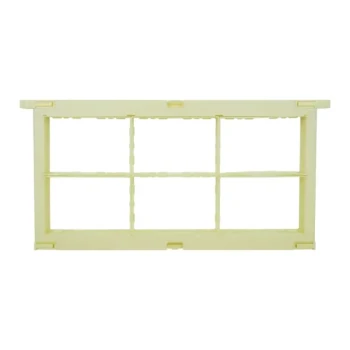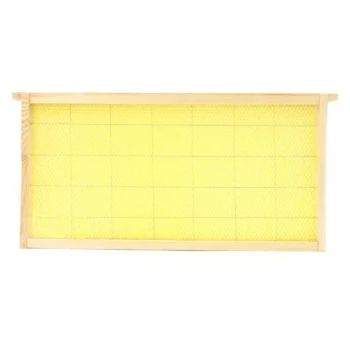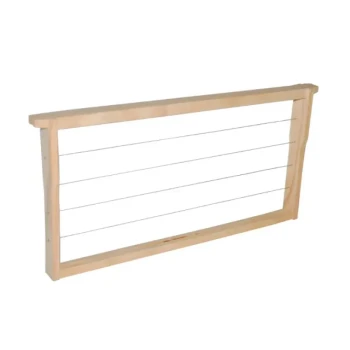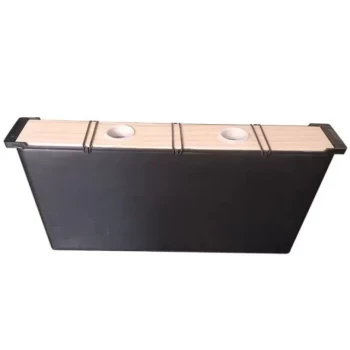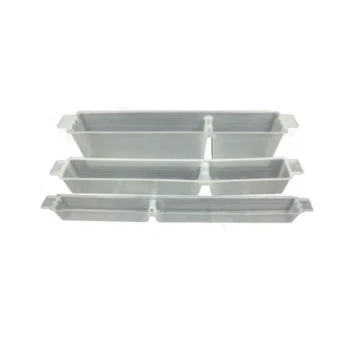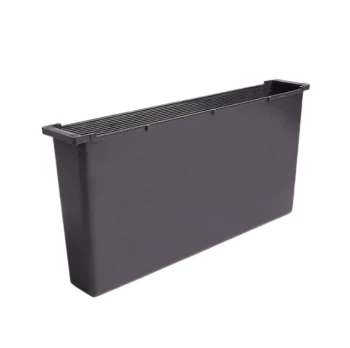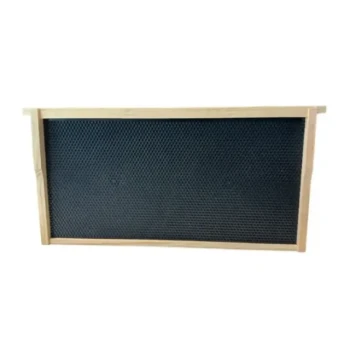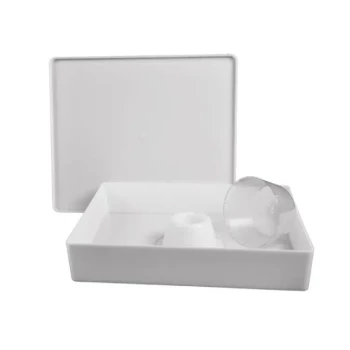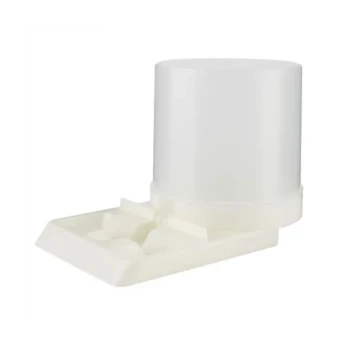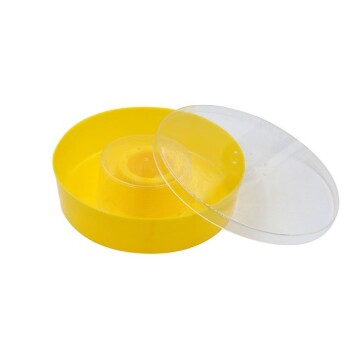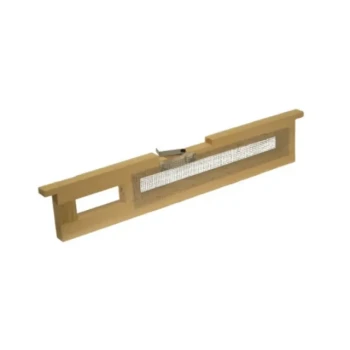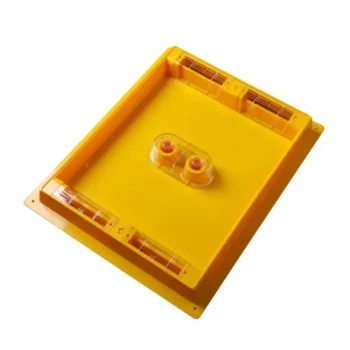The definitive signal to pull your honey supers is when the frames are at least 75-80% filled and sealed with a white beeswax "capping." While this often aligns with late summer months like August or September, the bees' progress is the most reliable indicator that the honey is cured and ready for harvest.
Your primary goal is to harvest honey that the bees have certified as ready. The wax cappings are that certification, indicating the honey has been dehydrated to the proper moisture content and will not ferment after you extract it.
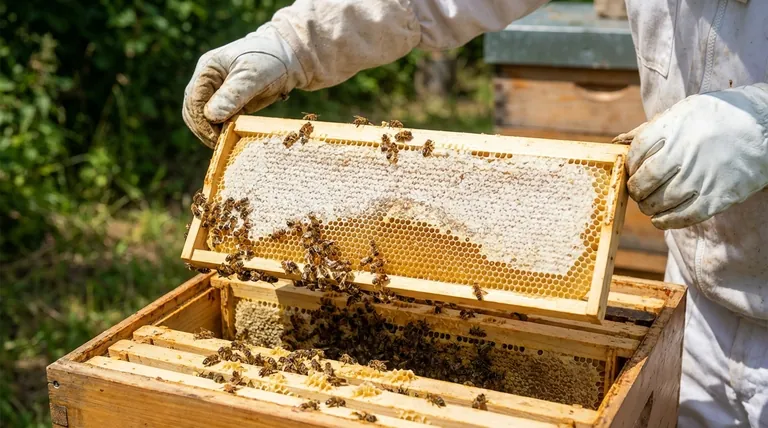
The Primary Signal: Capped Honey
A common mistake is to harvest based on a calendar date alone. Your bees work according to the local nectar flow, not a human schedule. Learning to read the frames is the most crucial skill for determining the right time to pull your supers.
What "Capped" Honey Means
When bees seal a cell with a fresh layer of white wax, they are signaling that the nectar inside has been converted to honey. This process involves reducing the water content to below 18.6%, which prevents yeast and other microbes from spoiling it. Capped honey is shelf-stable and preserved for the colony's future use.
The 75-80% Rule Explained
You do not need to wait for 100% of the frames to be capped. A super is considered ready when 75% to 80% of the cells are sealed. The small amount of uncapped honey will be mixed with the fully cured honey, bringing the average moisture content to a safe level for extraction.
Reading the Frames
To check, open your hive and lift a frame from the center of the uppermost super. Look for a uniform pattern of white wax cappings. If you see large patches of open, glistening cells, the honey is not yet ready. The bees typically work from the center of the super outwards.
Timing Beyond the Cap: Seasonal Considerations
While capped frames are the primary signal, the broader season and local environment provide critical context for your decision.
The End of the Nectar Flow
The ideal time to pull honey is at the end of a major nectar flow. This ensures you have captured the maximum surplus from that bloom. Signs of a flow ending include a noticeable decrease in bee traffic at the hive entrance and a less frantic pace of work inside the hive.
Typical Harvest Seasons
In many temperate climates, the primary honey harvest occurs in late summer (August or September). This is when the major summer nectar sources have finished blooming. Harvesting at this time allows you to prepare the hive for the winter months ahead.
The Possibility of an Early Harvest
Some regions experience distinct spring and summer nectar flows. If a colony is exceptionally strong and fills supers during the spring flow (often by mid-April or May), you can perform an early extraction. This frees up space for the bees to collect nectar during the subsequent summer flow.
Understanding the Trade-offs and Risks
Harvesting honey is a balance. Acting too early or too late comes with distinct consequences for both your honey quality and the health of your colony.
Pulling Supers Too Early
The single greatest risk of harvesting too early is fermentation. If the honey's moisture content is too high (above 18-20%), naturally present yeasts will activate, causing it to spoil and ferment. Uncapped honey is "green" nectar and is not yet shelf-stable.
Waiting Too Long
If you wait long after the nectar flow has ended, the bees may begin to consume the honey they stored in the supers. Late-season harvesting can also be more disruptive to the colony as they are beginning to form their winter cluster and become more defensive.
Leaving Enough for the Bees
Crucially, the honey in the supers is the surplus. You must ensure the bees have ample stores for themselves to survive the winter. A common guideline is to leave the colony with a full deep brood box of honey, which can weigh 60-80 pounds, before you consider taking any surplus.
Making the Right Choice for Your Harvest
Use the condition of the frames as your primary guide, supported by your understanding of the season.
- If your primary focus is guaranteed quality: Wait until the frames in your supers are 80-90% capped to ensure the lowest possible moisture content.
- If your primary focus is maximizing yield: You can pull supers when they are 75% capped, especially if you have a honey refractometer to verify the moisture is safely below 18.6%.
- If your primary focus is colony health for winter: Complete your final harvest before the weather turns cold, ensuring you leave more than enough honey in the brood boxes for the bees to survive.
Ultimately, trust the bees' signals on the comb, not the calendar, to guide a successful and sustainable harvest.
Summary Table:
| Key Indicator | What to Look For | Why It Matters |
|---|---|---|
| Capped Frames | 75-80% of cells sealed with white wax | Signals honey is cured and shelf-stable (<18.6% moisture) |
| Seasonal Timing | End of a major nectar flow (e.g., late summer) | Maximizes surplus yield without disrupting the colony |
| Risks of Early Harvest | High moisture content in uncapped honey | Can lead to fermentation and spoilage |
| Risks of Late Harvest | Bees consuming stored honey; defensive colony | Reduces yield and can stress the hive pre-winter |
Ready for a Bountiful and Efficient Harvest?
Maximizing your honey yield while ensuring colony health requires the right equipment. HONESTBEE supplies commercial apiaries and beekeeping equipment distributors with durable, high-performance beekeeping supplies through our wholesale-focused operations.
From honey extractors and uncapping tools to durable supers and frames, our products are designed to support a successful harvest season. Let's discuss your apiary's needs and how we can help you achieve superior results.
Contact our wholesale team today to get started!
Visual Guide

Related Products
- Professional 500g Sectional Comb Honey Frame System for Beekeeping
- Heart-Shaped Comb Honey Frame and Honeycomb Cassette
- Plastic Honey Comb Frames Cassette Box for Honey
- Plastic Bee Frame Beekeeping Hive Frames for Wholesale
- Assembled Wooden Bee Frames with Beeswax Foundation Ready to Use by HONESTBEE
People Also Ask
- What frame to use for honeycomb? Choose the Right System for Pure, Edible Comb
- How much honey can you get from one frame? Maximize Your Harvest with the Right Frame Size
- How do you inspect honey frames? Master the 70-80% Rule for Healthy Hives
- How long does it take for bees to fill a frame with honey? It Depends on These 4 Key Factors
- What should be done if bees won’t use the honey super? Unlock Your Hive's Full Honey Production Potential
